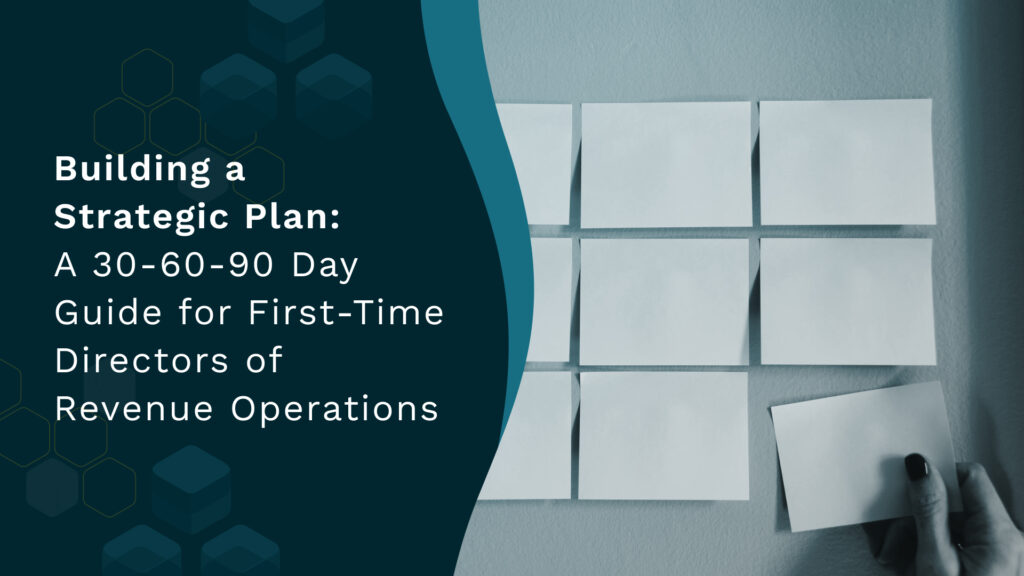
Mastering the Data Battle: A RevOps Guide to Conquer Bad Data
Bad data can have catastrophic effects on your revenue engine. Learn how RevOps teams can create the right strategy to deal with this.
Most organizations, particularly those that scale quickly, face an extensive challenge with poor quality data. It keeps businesses from maximizing opportunity, contact, account and intent data to improve revenue growth.
Can something be done to solve a challenge as big as this? We recently discussed this with RevOps and data expert Melissa McCready, Founder & CEO at the Navigate Consulting Group.
Melissa has 20 years of experience, making her an expert veteran in CRM, marketing, automation and customer success. Her journey led to consulting for revenue and growth operations, successfully managing over 300 projects throughout her career.
From Melissa’s experience, we discover the challenges of bad data and how you can convert data from a liability to an asset.
You can listen to the full conversation with Melissa here:
First, What Is Bad Data?
It may sound cliche, but data is the fuel that keeps your revenue engine running. But it’s not just about having tons of data at your disposal. It’s about having clean and complete data, so that you can draw the right insights to make good business decisions.
Why do we stress this so much? As Melissa points out,
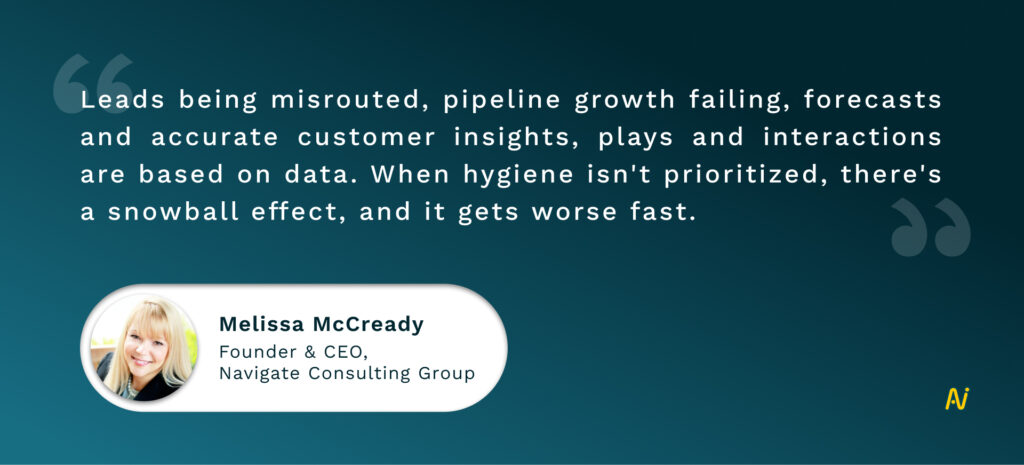
So, what data should you be worried about? Inconsistent, incomplete, inaccurate, siloed, duplicate and non-compliant data.
Bad data doesn’t enrich the sales and revenue process. Instead, it has a devastating influence on business (which is an understatement). Each time you use flawed data to make business decisions, you take one step forward and three steps back.
Let’s find out how bad data affects your organization and what you can do to solve the problem.
Why Is Bad Data Still a Challenge in 2024?
Bad data isn’t a new problem. But it’s one that still needs solving, given that the volume of data is only growing.
Here’s why bad data is still a challenge in 2024.
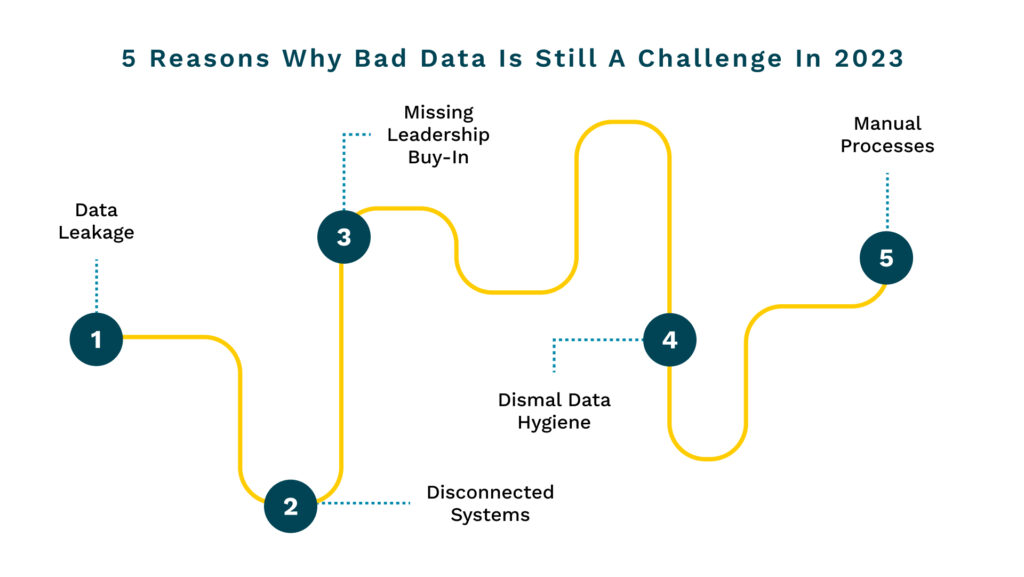
1. Data Leakage
For 48% of sellers, incomplete data is their most significant challenge.
Data is often seen as the heart of business operations because it gives you complete visibility on your pipeline, improvement areas, leading indicators and critical insights. Yet, 79% of opportunity data never enters your CRM.
There could be multiple reasons for this:
- Reps miss entering some data points manually
- Reps aren’t trained to use all functionalities of the CRM, so they don’t use it
- Complicated workflows don’t capture key information
As a result, missed poor-quality data enters your tech stack, aka data leakage.
Clean data is crucial to enable a lead’s seamless journey from initial conversation all the way to cash. It shows you exactly what stage of the buyer journey a lead is at, and how you can provide value at each touchpoint.
For instance, with clean data you can find out what use cases work best for your leads in a certain industry. You can then pass on those insights (value) to other stakeholders in the same industry, showing that you’re more than just a seller but a partner.
Situations may also change during the course of the deal. A key stakeholder may leave the buyer organization, or the company could get acquired. As the situation unravels, your contact data must reflect the updates.
But if your data isn’t updated regularly, the CRM may seem fishy with data decay. Plus, you can’t accurately validate stakeholders in the buying group. You won’t know whom to contact, nor can you hold personalized interactions with each stakeholder.
2. Disconnected Systems
Source: Twitter
Tools in your tech stack capture large amounts of data from buyer-seller conversations. The problem arises when tools don’t speak with each other, and the data doesn’t flow into the rest of the tech stack.
Quality data remains stuck in inboxes, chats, calendars, meeting notes, and transcribed conversations. Notes, tasks and other information, rich with data about the pipeline and deals, are stored and collaborated on in different tools.
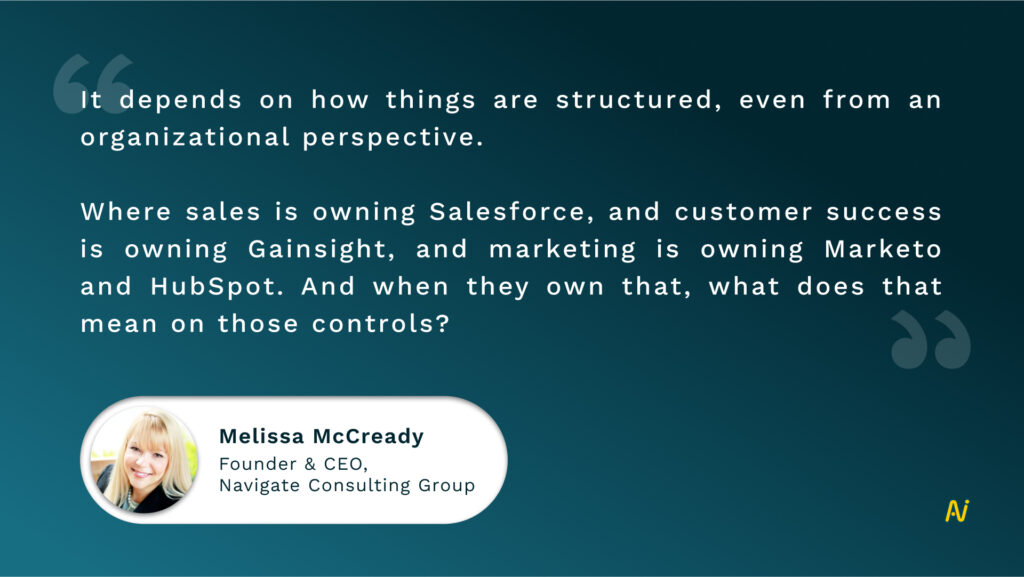
If you don’t have a single source of truth or CRM connected with adjacent tools, these tools aren’t helpful. Nor can you create a complete flow of the buyer journey.
3. Missing Leadership Buy In
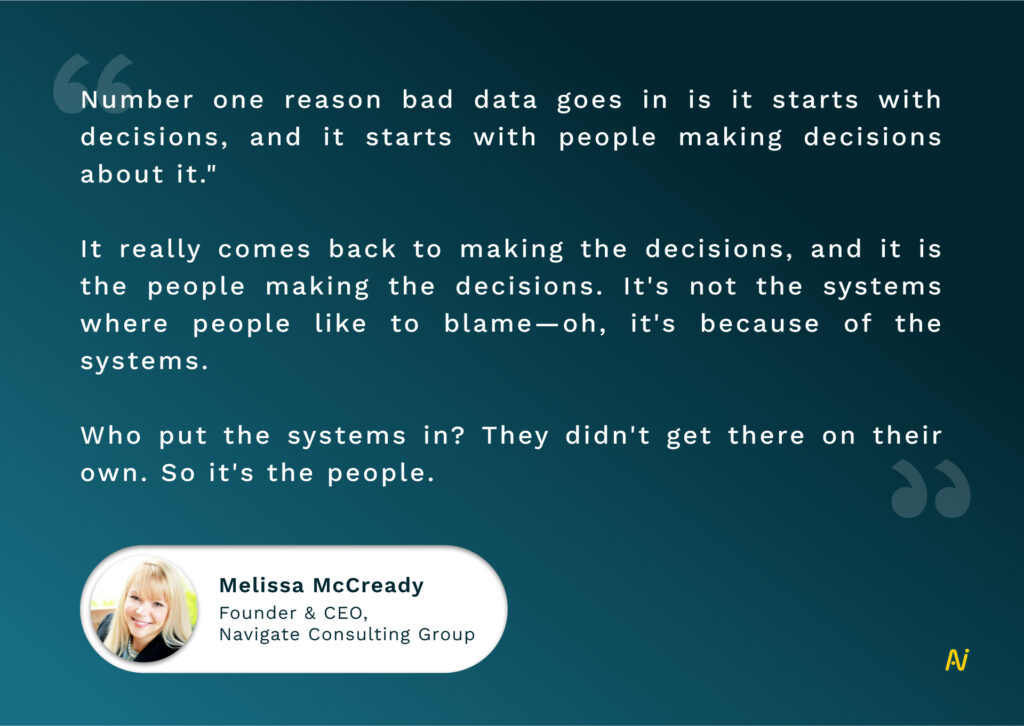
Only 19% of business leaders consider CRM data a high-priority initiative for their organization. To add to the problem, bad data restricts managers from effectively coaching reps and limits 27% of them from attaining quota.
When leaders can’t prioritize clean data or regulate poor-quality data, the whole company bears the brunt. Poor data culture trickles down from the top, snowballing into low-quality practices which hurt customer experience and trust.
Still, more and more leaders make decisions based on inaccurate or manipulated data. That’s because many of them still need to be fully aware of the ramifications of bad data, or even worse, they can’t find the time to fix the problem.
4. No Data Governance Strategy in Place
Self-reporting and recurring inefficiencies in data amplify decay, giving you and your teams incorrect information and creating distrust in data.
Another problem is reps not wanting to drop leads from the pipeline, thinking that a full pipeline is better for business. But bloated pipelines, coupled with stale data, skew insights. Reps end up wasting time chasing the wrong opportunities.
Not cleaning the data in your systems at regular and consistent intervals shows a lack of a solid data governance strategy. And no single source of truth truly owns the data.
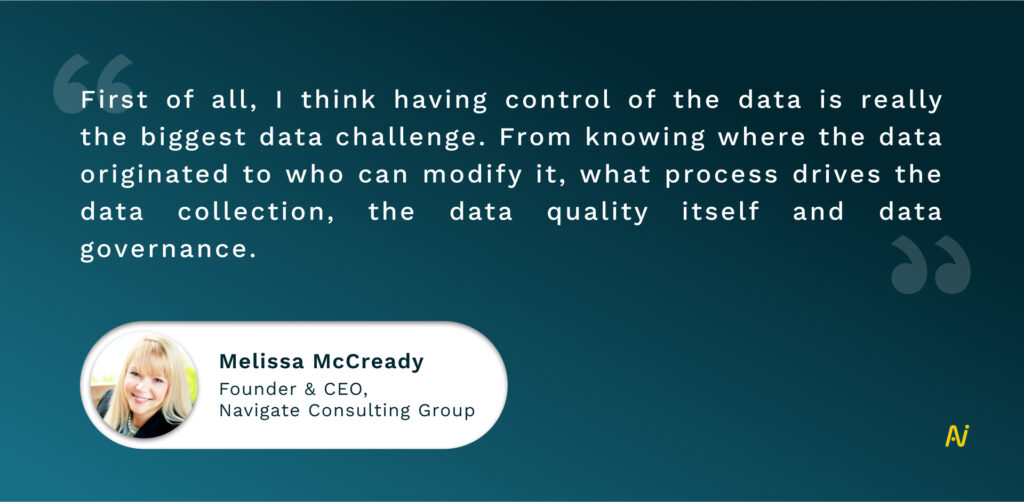
With so much data making its way into your systems, not having a data governance strategy is a recipe for disaster. You lack the groundwork to build the right tech stack and can’t map clean data across the company.
5. Over Reliance on Manual Processes
The ever-growing revtech ecosystem gives businesses many options, which means that organizations buy and deploy multiple tools at a time. That is exciting for the business, but reps may not share the same emotion.
When multiple tools exist, reps have to scroll between them to get information and insights manually. Or, information is stored on different tools and must be manually transferred to the CRM.
Data entry isn’t completely automated yet, either. The manual process could create gaps, inconsistencies and errors in the data, resulting in poor data hygiene. Add to that several activities reps must do today, and data entry seems complex and unrewarding.
Instead of making the load lighter, reps are overwhelmed with the tools they update and keep track of. 66% of sales reps feel overwhelmed by the number of revenue tools.
Another 81% of sellers say that reducing their time on administrative activities like data entry could be more profitable for their company.
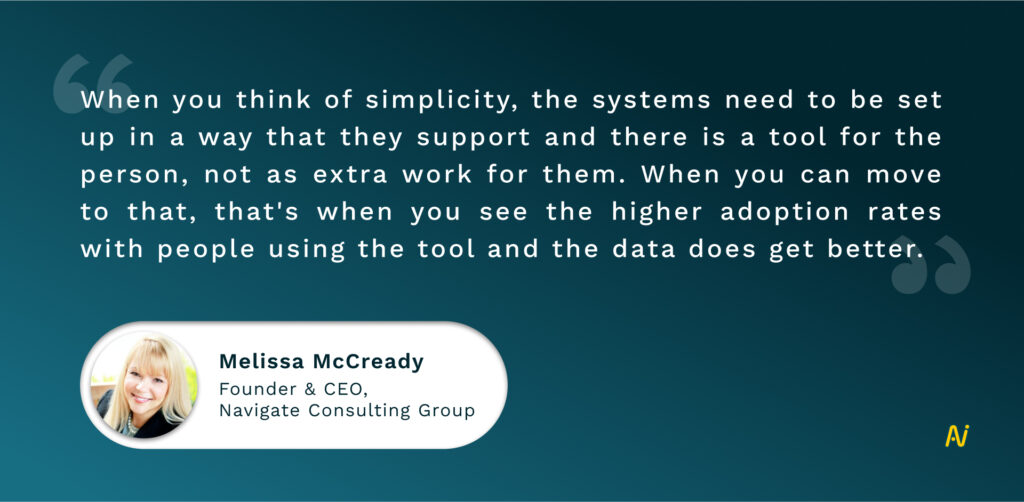
The Impact of Bad Data on Revenue
A huge challenge also has a sizable impact. If you’re facing a bad data problem right now, this is how it’s affecting your organization.
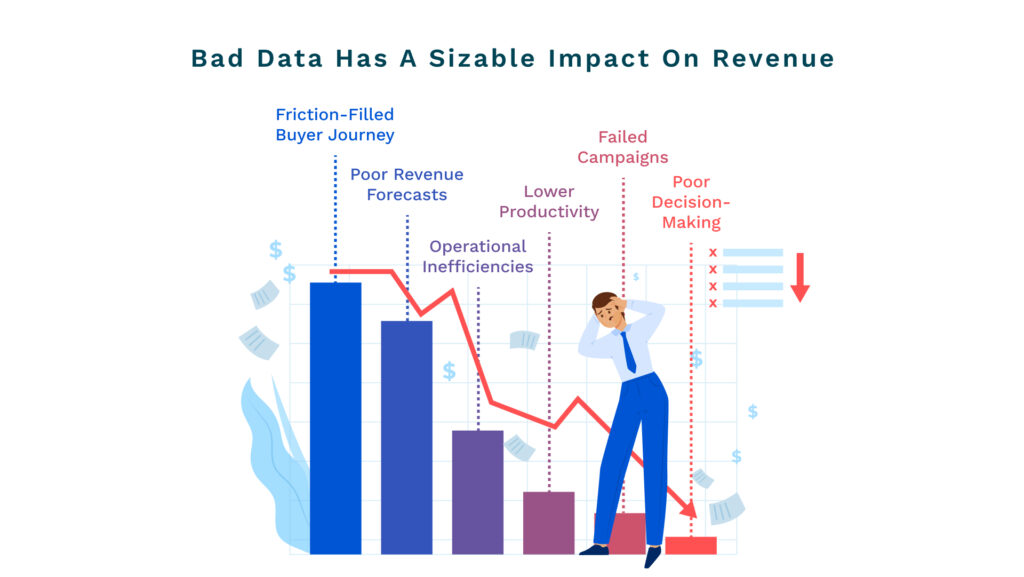
1. Friction-filled buyer journey
Bad data limits the exchange of information between customer-facing teams, mainly sales, marketing and customer success. With poor visibility into the customer journey, you have a limited understanding of where the buyer is and what they need from you.
It snowballs into a more severe problem when you consider that buyers are present on ten or more channels today.
Bad data creates friction at customer touchpoints and in between handoffs, as data doesn’t flow seamlessly between one touchpoint and the next.
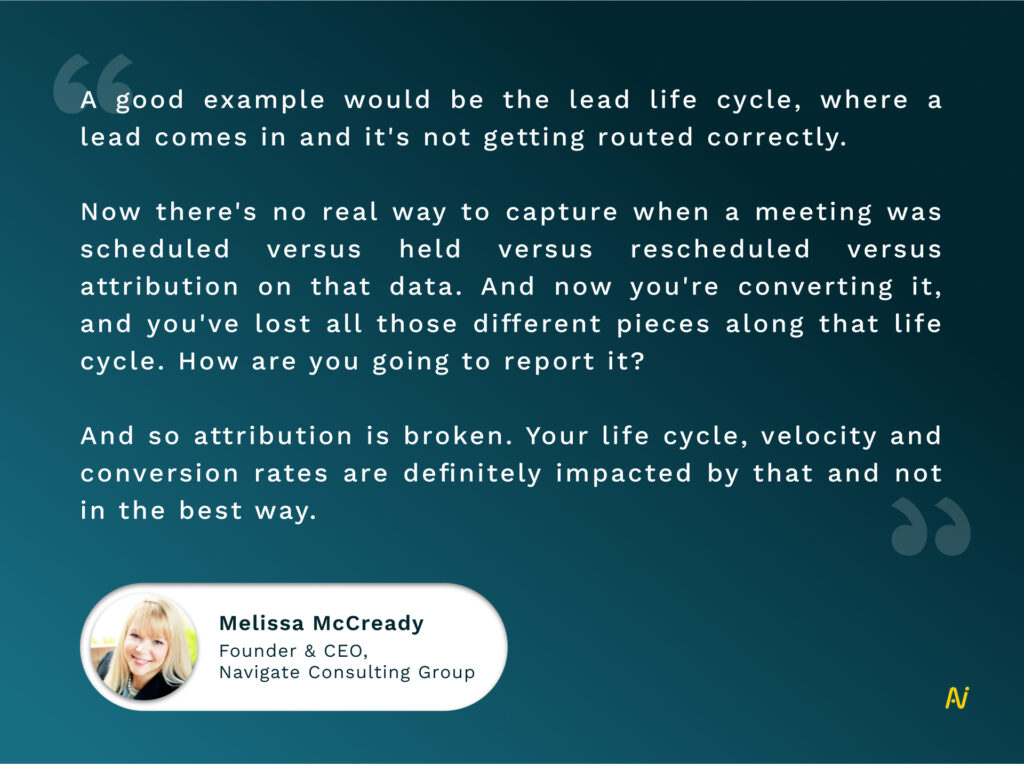
As Melissa mentions, poor data quality has a multifold impact on the customer journey. 56% of sales reps lose existing customers, while 51% lose new deals due to poor data quality in the CRM.
You also can’t personalize interactions at each touchpoint because you don’t have enough information on the buyer. Nor can you send targeted messages as they move through the revenue funnel.
Customers end up going through repetitive motions at each stage, making it obvious that you offer a disconnected journey. In the age of self-serve and quick resolutions, friction is a put-off and sends your buyers to the competition.
2. Poor revenue forecasts
Bad data doesn’t just affect the ongoing period. You could also lack accurate, reliable and complete historical data. It means that your data on audience segments, lead personas, deal size, conversion rates, sales volume, and time to close deals could all be incorrect.
Forecasting drives business strategically, but bad data blurs reliable predictions. Limited visibility into current pipeline opportunities and deal progress compounds the problem.
The counter-argument could be that human insights can drive the way to creating good forecasts. But over-reliance on humans isn’t enough because human insights primarily rely on guesswork and instinct.
These are no good for forecasting, specifically in a highly competitive and dynamic business environment.
3. Operational inefficiencies
The last few years have been a bull run for sales and revenue tech. In the overall revenue ecosystem, there are nearly 10,000 tools available. Businesses saw impressive growth rates and, therefore, amassed several of these tools in the tech stack.
But 2023 hardened the operating environment and slowed down funding. The old “more tools, more revenue” playbook doesn’t help anymore.
As businesses shift to making the most of existing tools, they realize that bad data renders most of them unusable. And then, there are the problems during data migration. If you have bad data in your existing systems and migrate the same to new systems, planning to clean the data later doesn’t help.

Bad data also doesn’t let you course correct and adapt to changing situations quickly.
Plus, poor data governance means that you’re constantly under threat of non-compliance and unoptimized processes. It’s particularly concerning because 84% of consumers can only trust brands that prioritize using personal data with privacy in mind.
4. Lower Productivity
When there’s poor quality data in your systems, reps waste valuable time doing the following activities instead of spending time on building profitable relationships with prospects and customers:
- Looking for data
- Trying to vet information for accuracy
- Following up with multiple teams for complete information
- Navigating buying committees they know little about
When customers don’t get enough attention, they’re naturally unhappy with reps, affecting employee motivation.
Also, unclear data causes reps to lose leads in the sales funnel. If this happens, they can’t follow up consistently with new leads and existing customers. Ultimately, they miss targets and can’t attain their quota.
As bad data translates into poor performance, reps feel frustrated and undervalued simultaneously. It consequently impacts their productivity and pushes them to seek job opportunities elsewhere.
5. Failed Campaigns
Bad data gives you an obscured picture of the ICP. You can’t segment the right audience, which further leads to setting incorrect campaign objectives and processes.
Plus, marketing and sales campaigns no longer work with a spray-and-pray approach. You can’t hope to send out a message and hope that it reaches the right audience. You must get it right on the first attempt, or customers will likely move to better options.
The situation gets worse when a single buyer is actually made up of multiple stakeholders. It’s not just about customizing for the champion or point of contact; it’s about paying attention to each stakeholder’s needs.
But when reps contact the wrong POC at the buyer’s company or use the wrong messaging, you risk losing revenue before it even comes in. You could also lose a deal if reps only contact a single individual in the buying group (single threading rather than multithreading).
Without the correct data to guide them, reps may not know what constitutes a qualified lead and how to take the conversation forward.
All of the above ends in campaign failure.
6. Poor Decision-making
No visibility into the pipeline equals reps not interacting with all stakeholders in the buying committee, which ultimately translates to missed opportunities.
Sales doesn’t have complete and reliable insights. Marketing doesn’t know the ICP well. And customer success can’t drive upsells, cross-sells and renewals.
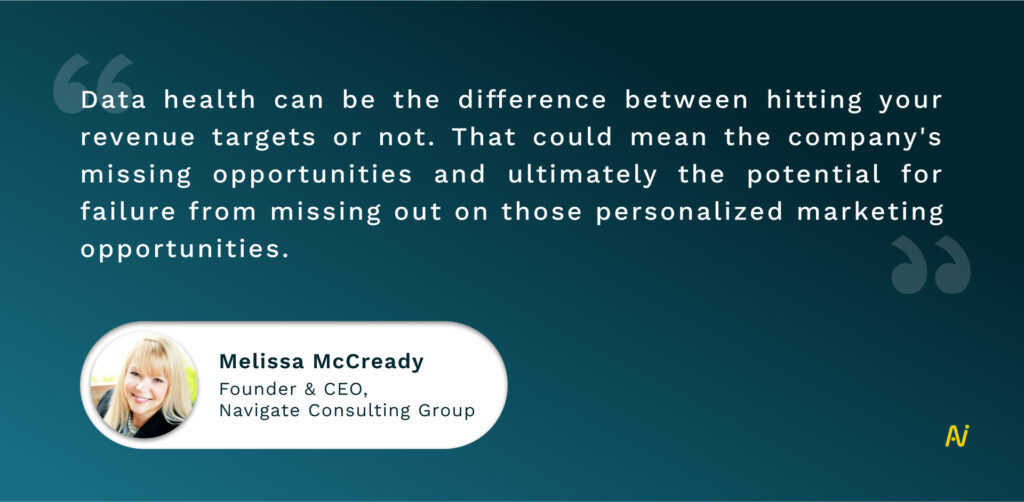
By relying on bad data, data-driven activities don’t follow the best decisions. Leaders and managers themselves have little faith in the system data. Instead, they make business decisions based on gut and poor-quality information.
Your CRM is one of the most significant tech investments. But when it’s riddled with subpar data quality, you can’t make the most out of the CRM and generate ROI.
How Revops Streamlines Data Quality
Before diving into how RevOps helps solve the bad data problem, let’s understand what RevOps could mean.
Everyone has a slightly different definition of RevOps. Here’s Melissa’s:
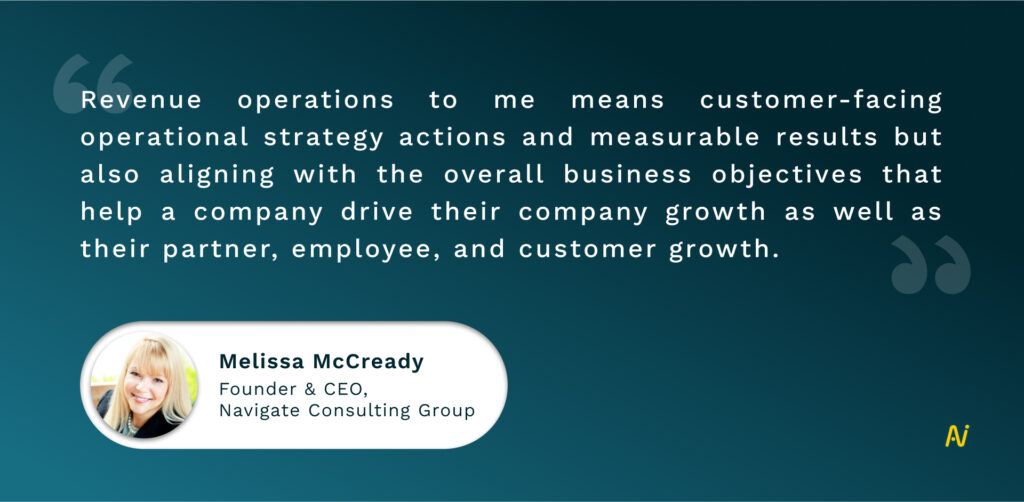
She also prefers using the term “Growth Ops” because she feels that RevOps will eventually enhance business growth.
When it comes to revenue growth, the funnel is a bowtie, no more ending with sealing the deal. It extends much beyond a sale, bringing a strategic change in the meaning of revenue generation itself.
The ultimate goal of RevOps is to ensure that no teams work in silos but win deals together on a unified front. It guards the GTM function and leverages it to the max to grow revenue.
Melissa discusses 4 ways by which RevOps streamlines clean data within the organization.
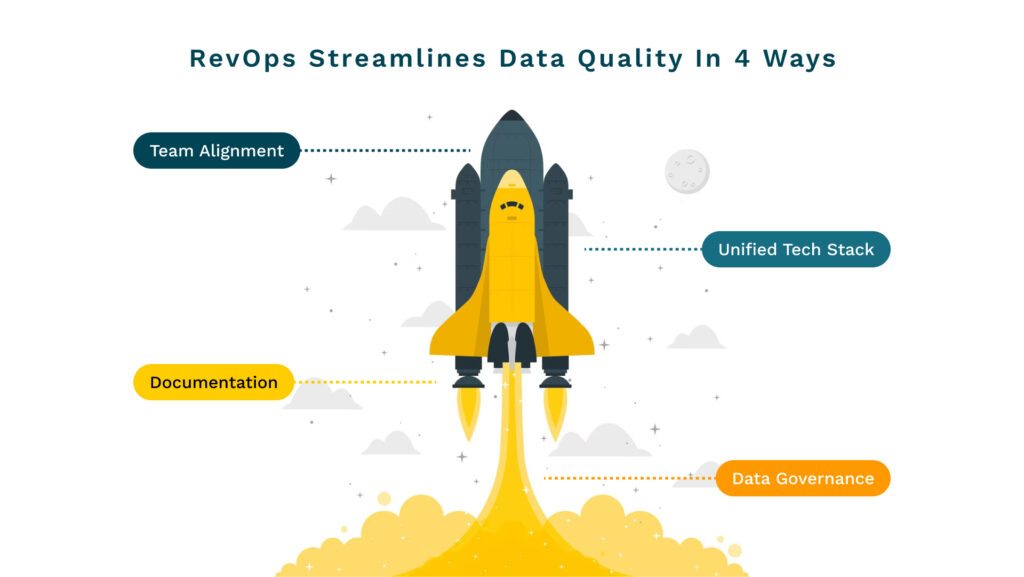
1. Data Governance
The first thing RevOps does is help convert data from a liability (bad data) to an asset (clean data). To do this, it provides the framework for setting up a data governance infrastructure.
A data governance framework is particularly helpful when there are multiple data sources today. Moreover, the buyer journey is no longer linear, so customers don’t fit into the conventional sales funnel path.
Data governance has all of the above covered. It upholds data integrity for all information flowing in and out of your systems.
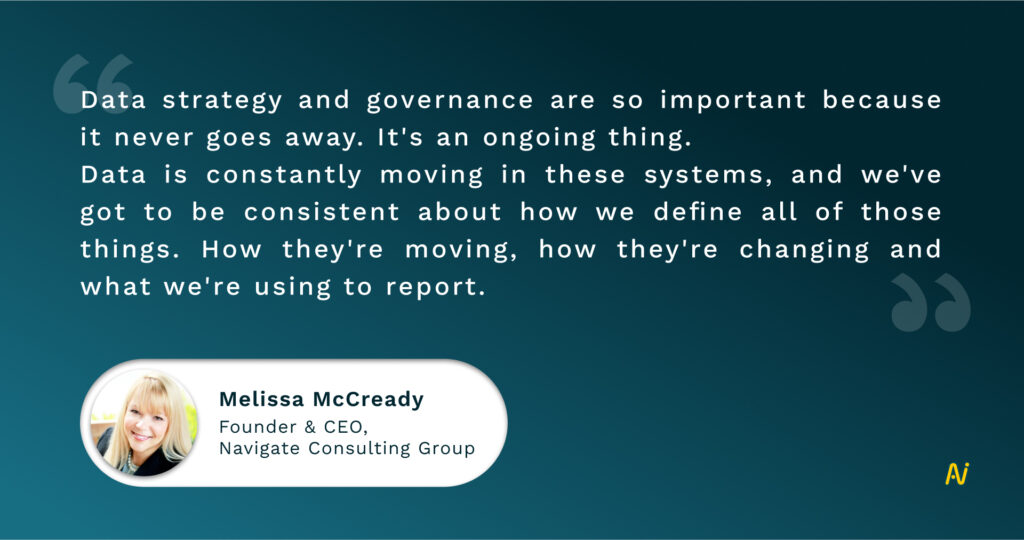
Data governance keeps your data clean, usable, reliable and, most importantly, secure in the short and long term. Regularly checking data fields, integrating tools, and auditing each tool solidifies the CRM as a single source of truth.
Plus, the data governance framework supports automating manual processes to capture and enrich data for scalable revenue growth. This creates compelling use cases for leadership buy-in.
2. Documentation
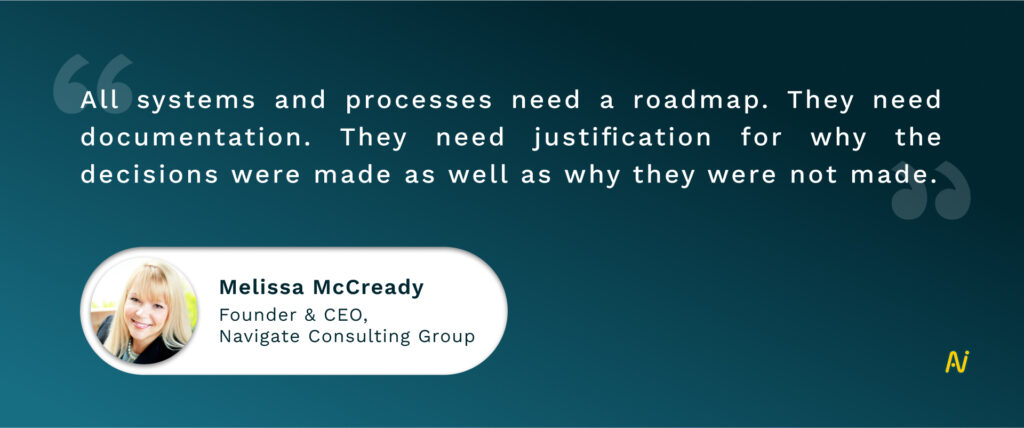
RevOps encourages you to set up documentation, especially if you’re just starting your revenue operations journey.
You may not necessarily think about documenting your processes in the initial stages. But data doesn’t stop for anything. It grows in volume suddenly, and then, you find your business in a situation where you don’t know how different data fields are connected or where data leaks happen.
For proper documentation, make note of each system field to find out:
- Where the data originates from
- Where the data is integrated
- Who owns the data
- Who controls the data
- Who has access to the data
- Who can modify the data or system of record
Documentation is beneficial during handoffs between critical business points. It creates a visual representation of workflows, making the handoff process easier.
More importantly, documentation opens your eyes to how complicated the data process is. It refines your approach towards ensuring that, to begin with, only clean data enters the system.
3. Unified Tech Stack
While CRM is still at the center of the tech stack, it’s no longer the solely used tool. A proliferation of tools with supporting functionalities is present in the market today.
But even as these tools must be integrated with the CRM, most businesses fail to keep a unified tech stack.
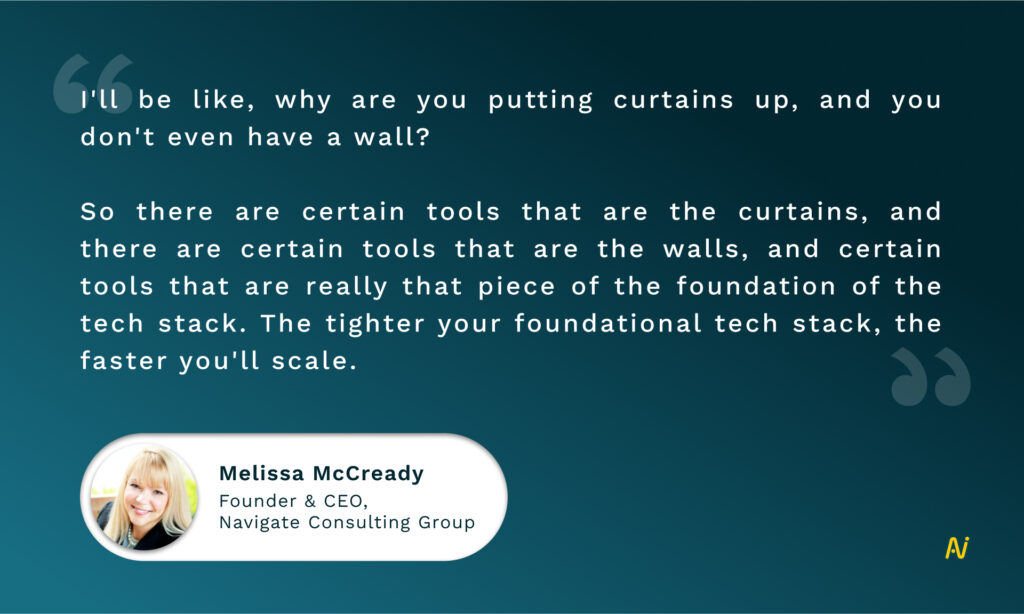
To strengthen your tech stack, RevOps sets up a formal requirements review process to choose between the many tools and functionalities.
Determine if you need a tool for the long term which will be used regularly. Or if you’re better off with something less expensive if you’ll not use the tool extensively. Plus, you can take maximum advantage of the functions you’re paying for and use them for their intended purposes.
Spell out your technology requirements clearly to avoid drowning in tech debt.
RevOps lays the foundation, blueprint and requirements for building a unified tech stack.
4. Team Alignment
Alignment is about more than just bringing people together. It’s also about having them work towards shared goals and a common data language. RevOps makes this easier by encouraging teams to set up a project charter.
A project charter includes:
- Why you’re undertaking RevOps
- How it aligns the teams to stick to clean data
- What are your expected results
- How long will it take and which teams are involved
You can lay out all of the above to assemble the right teams for the job.
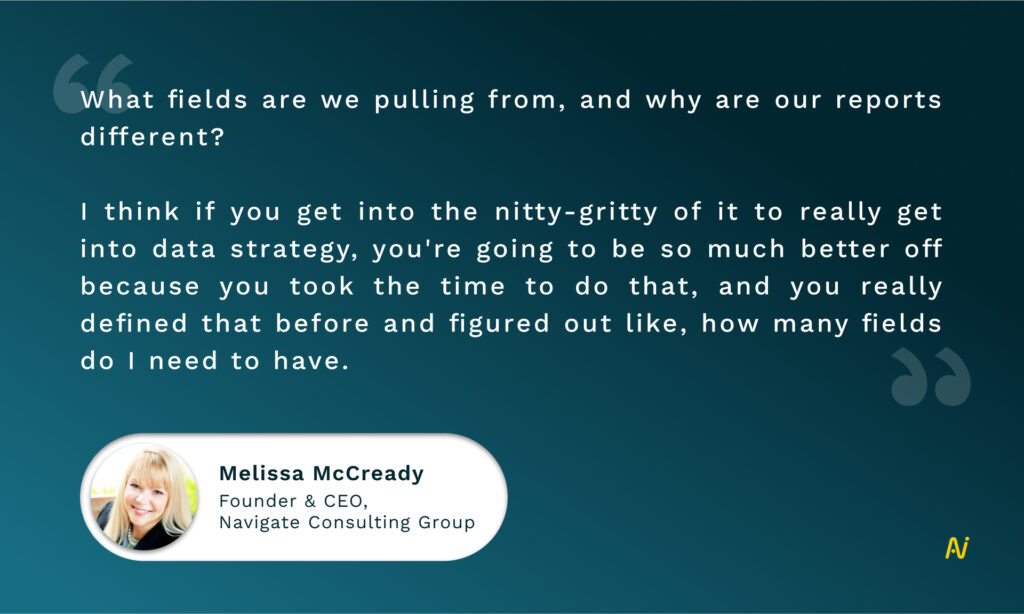
RevOps makes change management easier, particularly regarding the volume of people, processes and technology. It takes action so that people working in functional areas commit to shared goals together.
Why Revops is the Top Choice for Maintaining Clean Data
RevOps follows the above four actions to create the best data framework for your organization. Here are some data quality benefits you’ll see after deploying RevOps:
- You achieve business goals as well as shared (team) goals
- You can forecast revenue and plan territories better
- You can optimize your market coverage and reach the right audiences
- You have a more accurate lead scoring and qualification process
- A well-defined ICP leads to better, more targeted campaigns
- You can create personalized content and interactions to solve buyer pain points
- You determine the proper channels to use for revenue generation
- Your reps spend more time talking to prospects and connecting with them
- You can use sales triggers and intent data to move deals through the pipeline to conversion
- If you’re a leader, you can make better-informed and data-driven decisions
- You can ensure that your company remains compliant with laws and regulations across all teams
Put Data Hygiene on Autopilot with Nektar
Setting up RevOps to streamline data hygiene could be intimidating if you’re doing it manually. Besides ensuring that your managers and teams are aligned with the right goal, you can use automation to put data hygiene on autopilot.
Nektar was built for this very purpose—to make data hygiene a smooth-sailing ride. Our capabilities support you on your RevOps and data quality journey.

To learn more about how Nektar can enable clean data for your organization, get in touch with our folks.
But why stop there? We also consolidated our ultimate guide to RevOps roadmap ebook after speaking to 150+ revenue leaders. In this free guide, you’ll find templates, checklists and plans on how to build your very own RevOps roadmap!

PUBLISHED BY
